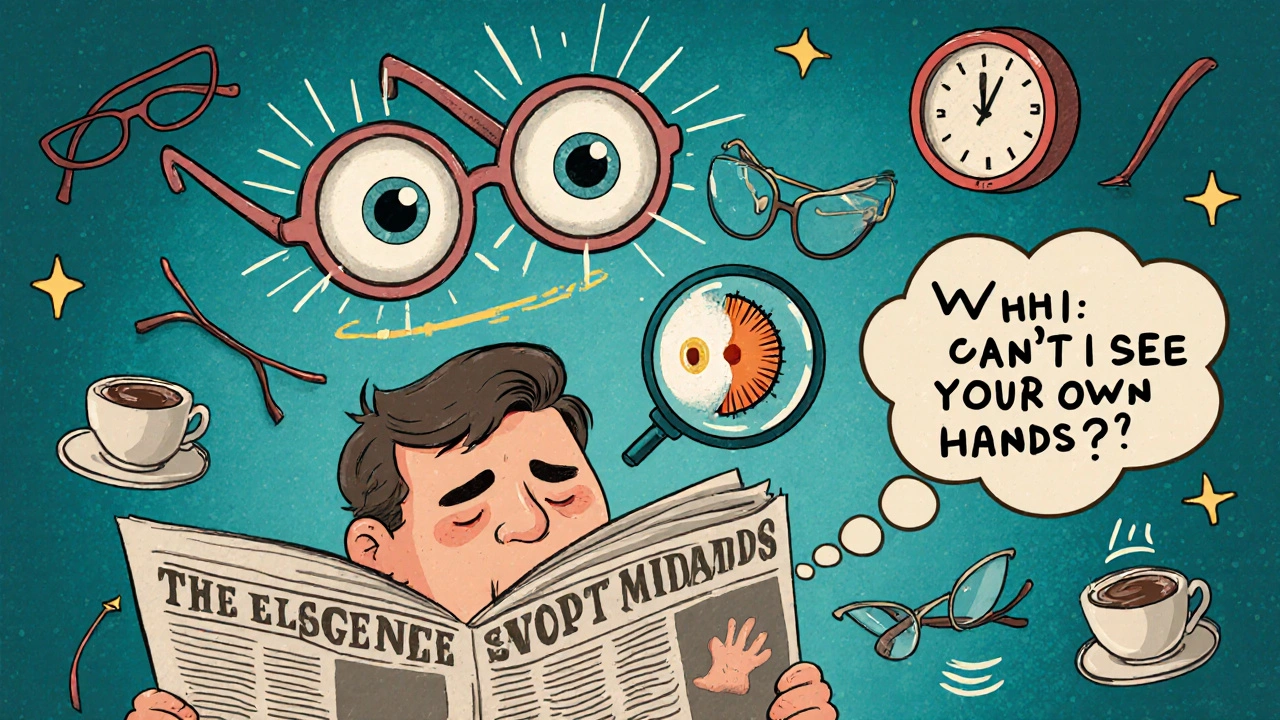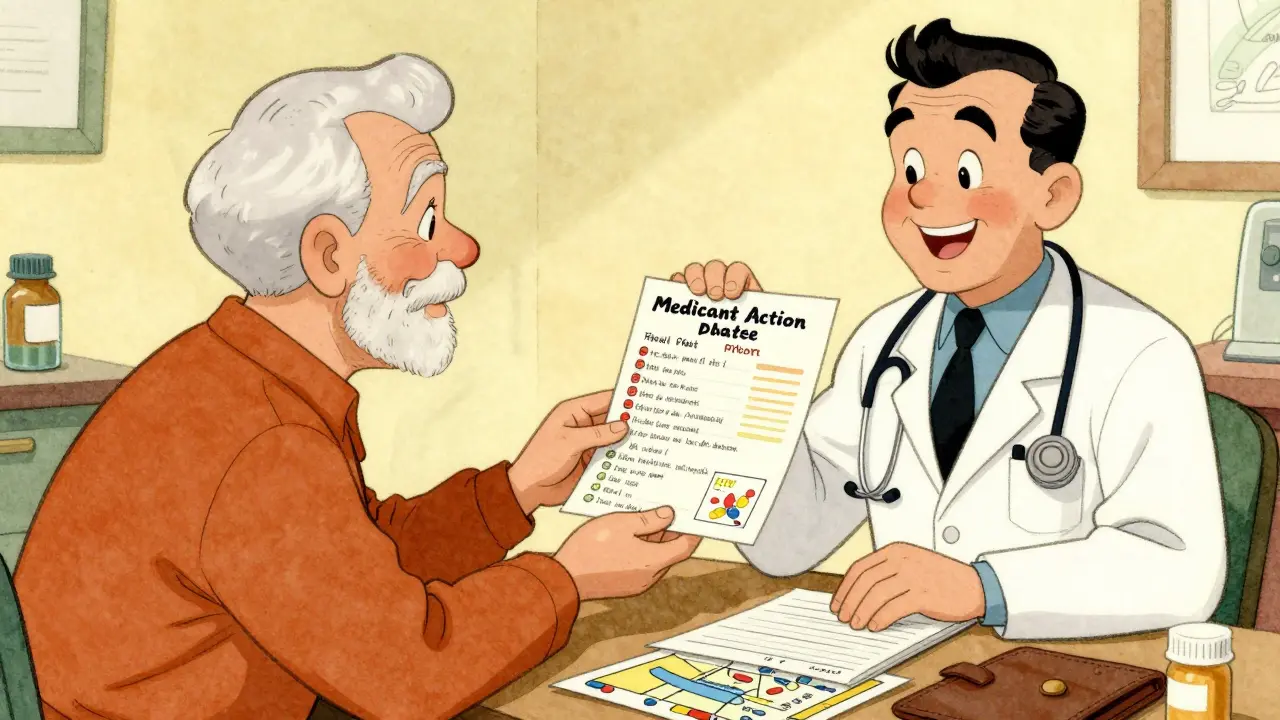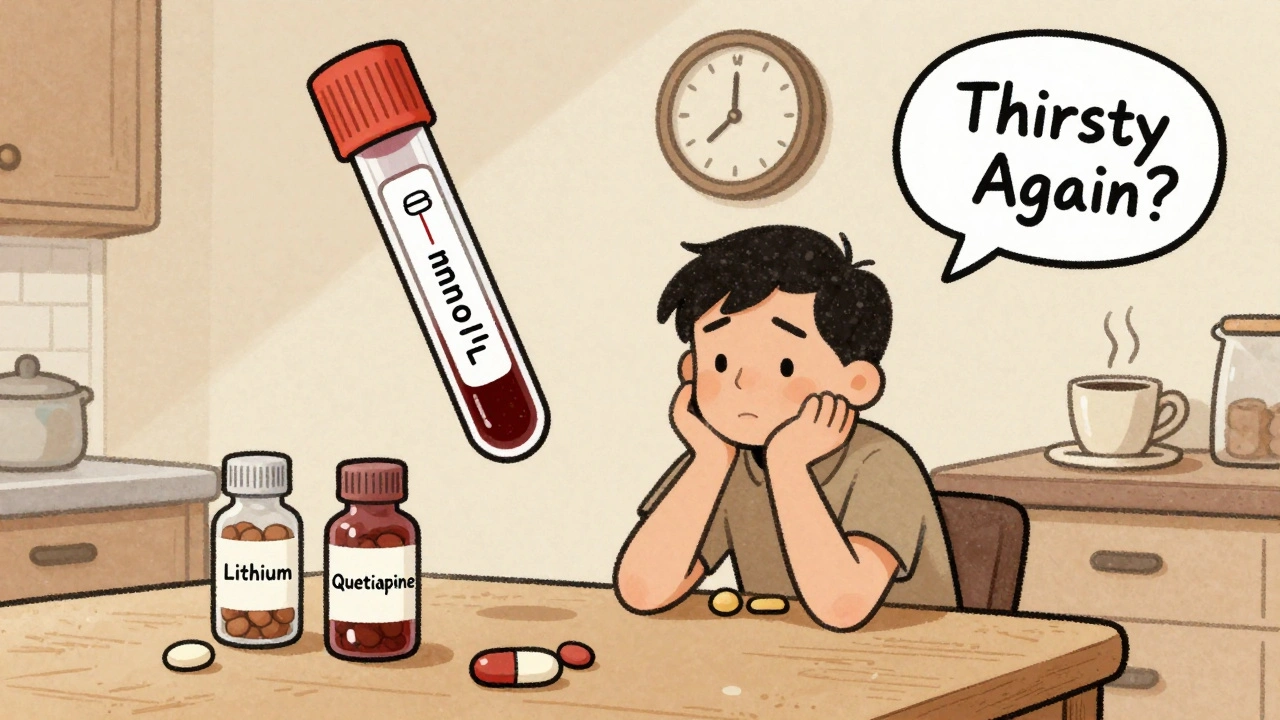Blurred vision isn’t just annoying-it’s a signal your eye isn’t focusing light the way it should. About 54% of adults between 40 and 69 have some kind of refractive error, according to the UK Biobank study. That’s more than half of us. And it’s not just an older person’s problem. Kids as young as 10 are getting diagnosed with myopia, and by the time they’re in college, nearly 90% of young adults in some parts of Asia are nearsighted. The good news? We know exactly what’s going on-and how to fix it.
What Exactly Is a Refractive Error?
Your eye works like a camera. Light enters through the cornea, gets bent (or refracted) by the lens, and lands sharply on the retina at the back. If the shape of your eye is off-too long, too short, or unevenly curved-the light doesn’t hit the right spot. That’s a refractive error. Three types dominate: myopia (nearsightedness), hyperopia (farsightedness), and astigmatism.It’s not about weak eyes. It’s about geometry. The National Eye Institute confirms these are structural issues, not diseases. They don’t mean your eye is broken. It’s just built differently. And that difference changes how you see the world.
Myopia: Why Distant Objects Look Foggy
Myopia means your eyeball is too long-or your cornea too curved. Light focuses in front of the retina instead of on it. Distant things blur. Close-up stuff? Crystal clear. That’s why kids squint to read the whiteboard or sit closer to the TV.It usually starts around age 10 and gets worse each year until the late teens. Genetics play a role-if both parents are nearsighted, the child’s risk doubles. But environment matters too. The National Eye Institute found kids who spend less than two hours outside daily are more likely to develop myopia. Sunlight seems to help regulate eye growth.
Correction is simple: minus (-) lenses. Glasses or contacts with negative power spread out light before it enters the eye, letting it land correctly on the retina. High myopia (over -6.00 diopters) comes with risks: 5 to 10 times higher chance of retinal detachment or degeneration. That’s why regular eye checks are non-negotiable for anyone with strong prescriptions.
Hyperopia: When Close-Up Vision Gets Tough
Hyperopia is the opposite. Your eyeball is too short, or your cornea too flat. Light focuses behind the retina. Up close? Blurry. Distant? Usually okay-until your eyes get tired trying to compensate.Many babies are born farsighted. Their eyes grow, and it often corrects itself. But for adults, especially over 40, it becomes obvious. Reading menus, threading needles, or staring at a phone screen for too long leads to eye strain, headaches, and fatigue.
Correction? Plus (+) lenses. These bend light inward, helping it focus earlier, right on the retina. The American Academy of Ophthalmology notes that hyperopia affects 5-10% of Americans. But it’s more common in Native American populations-up to 25% in some groups. That’s not just coincidence. Genetics shape how our eyes develop.

Astigmatism: The Eye That’s Not a Perfect Sphere
Astigmatism isn’t about length or width. It’s about shape. Instead of being round like a basketball, the cornea or lens is more like a football. That means light bends unevenly, creating multiple focal points. The result? Blurry or distorted vision at any distance.It’s incredibly common-30 to 60% of people have some level of astigmatism, often mixed with myopia or hyperopia. Many don’t even realize it until they get new glasses and suddenly, everything looks sharper. One Reddit user said it took three weeks to adjust to their new cylinder axis at 175 degrees. That’s normal. Your brain needs time to relearn how to interpret the corrected image.
Correction requires cylinder lenses. These have different powers in different meridians. The prescription includes a number (like -1.50) for strength and an axis (like 90° or 180°) for direction. If the axis is off by even 5 degrees, vision can feel “wavy,” like looking through water. That’s why precise measurements matter.
How Correction Methods Compare
You’ve got three main options: glasses, contacts, and surgery. Each has trade-offs.
| Method | How It Works | Pros | Cons |
|---|---|---|---|
| Glasses | Lenses bend light to compensate for eye shape | Immediate results, no risk of infection, easy to adjust | Can fog up, slip down, limit peripheral vision |
| Contact Lenses | Directly on the cornea, more natural field of view | Wider vision, no frames, better for sports | 3-4% risk of microbial keratitis; daily discomfort common; requires hygiene discipline |
| LASIK/PRK/SMILE | Laser reshapes cornea permanently | Freedom from glasses; 4.5/5 satisfaction rate | 20-40% get dry eyes post-op; night glare possible; not everyone qualifies |
Glasses are the most common starting point. They’re safe, reversible, and perfect for kids. Contacts offer freedom but demand responsibility. The CDC says about 1 in 25 contact wearers gets a serious eye infection each year. That’s rare-but not negligible.
Surgery is permanent. LASIK, approved by the FDA in 1995, uses a laser to flatten the cornea in myopia, steepen it in hyperopia, or smooth out irregularities in astigmatism. SMILE is newer, less invasive, and causes fewer dry eye issues. But you must be 18+, have a stable prescription for at least a year, and have enough corneal thickness (at least 500 microns). Not everyone qualifies.

New Frontiers in Correction
It’s not just about fixing vision anymore. We’re trying to slow it down-especially in kids.
Orthokeratology (Ortho-K) uses special rigid contacts worn overnight to gently reshape the cornea. By morning, vision is clear without glasses. Studies show it reduces myopia progression by 36-56%. It’s not a cure, but it’s a powerful tool for kids whose prescriptions keep climbing.
Low-dose atropine eye drops (0.01%-0.05%) are another breakthrough. Used nightly for two years, they can cut myopia progression by half to 80%. No surgery. No contacts. Just a tiny drop. The National Eye Institute calls this one of the most promising developments in pediatric eye care.
Wavefront-guided LASIK is improving outcomes for complex cases. Instead of a one-size-fits-all approach, it maps your eye’s unique imperfections down to the micrometer. That means fewer people end up with glare or halos at night.
What to Do If You Suspect a Refractive Error
If you’re squinting, getting headaches after screen time, or noticing your child leans way too close to books or screens, get an eye exam. Don’t wait for symptoms to get worse.
Children should have their first comprehensive eye exam by age 3, again before kindergarten, and then every year if they wear glasses. Adults under 40 should go every two years. After 40, annual checks are recommended-especially if you’re noticing trouble reading small print. That could be presbyopia, a natural aging change, not a refractive error.
Don’t buy over-the-counter reading glasses unless you’re sure you only need mild correction. They don’t fix astigmatism. And they can make things worse if your eyes need different power in each eye.
What’s Next for Refractive Errors?
By 2050, the Brien Holden Vision Institute predicts half the world’s population will be myopic. That’s over 5 billion people. The global eyewear market is already worth $140 billion-and it’s growing fast.
But we’re not just making better glasses. We’re trying to stop the problem before it starts. More outdoor time for kids. Better lighting in schools. Public awareness. And better access to care in low-income regions, where millions still go without correction.
Refractive errors aren’t glamorous. But they’re universal. And now, more than ever, we have the tools to fix them-with precision, safety, and real results.
Can you outgrow a refractive error?
Most people don’t outgrow myopia, hyperopia, or astigmatism. Myopia usually stabilizes in early adulthood, but it doesn’t reverse. Hyperopia can improve slightly in childhood as the eye grows, but in adults, it tends to get worse with age. Astigmatism usually stays stable unless there’s another eye condition like keratoconus. Surgery can permanently correct them, but natural recovery is rare.
Is LASIK safe for people with astigmatism?
Yes, LASIK is highly effective for astigmatism, especially with modern wavefront-guided technology. The laser can precisely reshape the irregular cornea to make it more spherical. Success rates are above 95% for mild to moderate astigmatism. But if your astigmatism is very high or your cornea is too thin, PRK or SMILE may be better options.
Why do my new glasses make everything look curved?
That’s usually due to high prescriptions or astigmatism correction. Strong lenses, especially in the edges, can distort the image. It’s called “peripheral distortion.” Most people adjust in 3-7 days. If it lasts longer than two weeks, your prescription might be off-or the frame fit is wrong. Return to your optometrist. Don’t ignore persistent distortion.
Can contact lenses cause permanent eye damage?
Rarely, but yes. Improper hygiene, sleeping in lenses not designed for overnight wear, or wearing them too long increases risk. Microbial keratitis-a serious infection-can cause scarring and vision loss. The CDC reports 3-4% of wearers develop it at some point. Always wash hands before handling lenses, replace them on schedule, and never use tap water to clean them.
Are there non-surgical ways to reduce myopia progression in kids?
Yes. Three proven methods: 1) Spending at least 2 hours outside daily-natural light helps regulate eye growth. 2) Ortho-K lenses worn at night to gently reshape the cornea. 3) Low-dose atropine eye drops (0.01%-0.05%) used nightly. These don’t cure myopia, but they slow it down by 50% or more over two years. Talk to a pediatric eye specialist if your child’s prescription is rising fast.







Peter Aultman
I've had myopia since I was 8. Glasses were a nightmare until I got contacts. Now I barely remember what my face looks like without them. 🤷♂️
Ashley Durance
The article mentions sunlight reduces myopia progression. That’s not science-that’s a correlation with confounding variables. Kids who play outside are also less likely to be glued to screens, eat better, and sleep more. Don’t reduce complex neuro-ophthalmic development to ‘go outside more.’
Kevin Wagner
Bro, if you’re still wearing glasses in 2024 and you’re over 18, you’re doing it wrong. LASIK changed my life. No more foggy lenses, no more sweat ruining my vision during workouts. I went from 20/400 to 20/15. Zero regrets. Get it done. 🚀
Dilip Patel
In India we have free eye camps in every village. No one needs to pay 1000$ for LASIK. Why are Americans so obsessed with expensive fixes? Our kids wear cheap glasses and still read books. You overmedicalize everything.
Eleanora Keene
I’m so glad this article exists. My 9-year-old was diagnosed with myopia last year, and I was terrified. I started making her play outside after school-no screens, just sunshine. Her prescription hasn’t changed in 10 months. I’m not saying it’s magic, but it’s something we can actually control. Thank you for the hope.
Scott Saleska
I’ve worn contacts for 15 years. I’ve had three corneal ulcers. I’ve cried in the bathroom because my eye felt like it was full of sand. And now I’m supposed to believe this is ‘freedom’? You’re not a hero for wearing contacts. You’re just someone who doesn’t want to admit you’re lazy. Glasses are safe. Get over it.
Don Ablett
The statistical prevalence of astigmatism cited as 30 to 60 percent is misleading. The threshold for clinical significance is rarely addressed. Many individuals exhibit low-degree astigmatism (<0.50 D) which does not impact visual acuity nor require correction. Population-based surveys often conflate statistical presence with clinical necessity.
gent wood
I’ve been wearing glasses since I was 12. I used to hate them. Now I collect them. I’ve got 17 pairs. Different frames for different moods. One’s even got little stars on the temples. My optometrist says I’m the only patient who treats glasses like fashion. I say: why not? Vision correction doesn’t have to be clinical. It can be joyful.
Sean Hwang
My kid got ortho-k lenses last year. Nightly wear. Morning vision = perfect. No glasses. No contacts during the day. School’s easier. Sports? No worries. It’s not cheap but it’s way better than watching her prescription climb every 6 months. Worth every penny.
Jane Johnson
The claim that 90% of young adults in Asia are nearsighted is exaggerated. It conflates prevalence with diagnosis. Many cases go undetected due to lack of access. Also, the data is often from urban elites. Rural populations are underrepresented. This article is oversimplified.
Joe Goodrow
America spends billions on LASIK while other countries fix vision with $5 glasses. We’re not fixing the problem-we’re selling a luxury. My cousin in Vietnam got his first pair of glasses for $3. He reads books now. We call that ‘progress’? Nah. We call that capitalism.
Ryan Anderson
I just got my first pair of glasses with a cylinder axis at 175 degrees. First day? Everything looked like a funhouse mirror. Day 3? Still weird. Day 7? I cried because I could see the leaves on the trees clearly for the first time in 12 years. 🥹 Don’t give up on the adjustment period. Your brain is learning to see again.